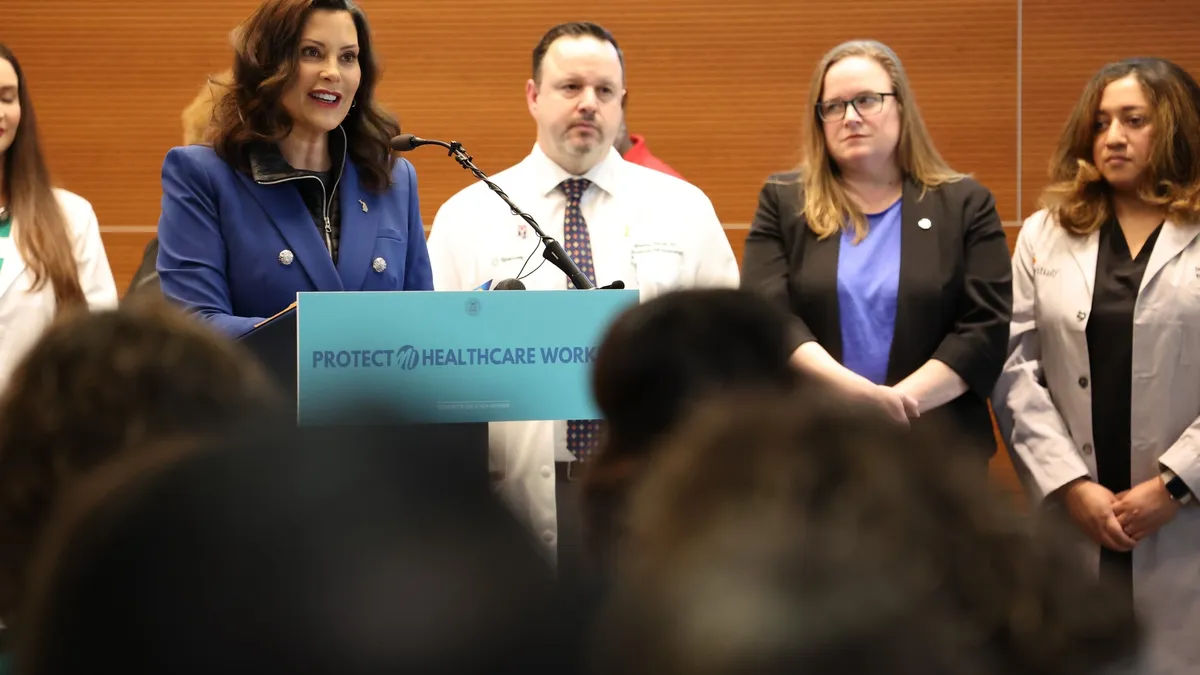Dive Brief:
- Healthcare workers faced an escalating mental health crisis between 2018 and 2022 driven by increased burnout, harassment and a lack of support from employers, according to new survey data published by the Centers for Disease Control and Prevention on Tuesday.
- More than 45% of healthcare workers reported feeling burned out often or very often in 2022, with the percentage of workers reporting feeling frequently burned out increasing from 11.6% in 2018 to 19% last year.
- Reports of harassment more than doubled during the study period and the number of workers very likely to seek another job increased by almost 50%. In contrast, turnover intention declined for workers in other essential industries.
Dive Insight:
The CDC study compared U.S. healthcare workers’ mental health and well-being metrics to those reported by workers in other essential industries, finding health workers’ mental health deteriorated at higher rates.
Debra Houry, chief medical officer for the CDC, warned on a Tuesday call with reporters that COVID-19 has intensified long-standing industry challenges among healthcare workers like compassion fatigue, depression, anxiety, substance use disorders and suicidal thoughts.
“To label our current and long-standing challenge a ‘crisis’ is an understatement,” said Casey Chosewood, director and senior medical officer at the CDC’s Office for Total Worker Health, during the media briefing. “Many of our nation’s healthcare systems are at their breaking point. Staffing crises, lack of supportive leadership, long hours of work and excessive demands and flexibilities in our nation’s health systems all must be addressed.”
Healthcare workers most at risk of reporting negative mental health outcomes included those who experienced harassment on the job or working in negative conditions.
Among healthcare workers who reported being harassed, 85% reported anxiety symptoms, 60% reported depression symptoms and 81% were burned out, the report found. Negative working conditions, including being short-staffed, were also associated with higher rates of depression and turnover intention.
Burnout can further exacerbate short staffing concerns, because some workers who seek to depart their job are considering exiting the industry entirely, the CDC’s Houry said in the media briefing.
“Some are not just jumping from hospital to hospital, but they are quite concerned about the system in general,” Houry warned. “So clearly, this reiterates the need to sound the alarm that the focus needs to be on long-term systemic fixes.”
Employers can proactively address healthcare workers’ mental health problems by creating conditions that allow workers to participate in decision-making, increase trust in management, offer supervisor assistance and support for productivity, and decrease harassment, according to the CDC.
The agency’s National Institute for Occupational Safety and Health will launch a national campaign for hospital leaders this fall that helps providers “think differently about how to identify and remove barriers to health worker well-being,” Houry said.
The initiative builds on other government programs that address burnout. Last year, President Joe Biden provided $103 million in awards to combat burnout and promote mental health and wellness among the healthcare workforce.
Also last year, the U.S. Surgeon General released an advisory on burnout among healthcare workers, noting that employers could play a critical role in reducing distressing work environments that contributed to burnout.













